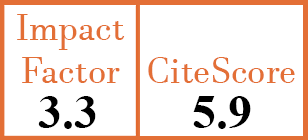Full Papers
Significant association of CX3CR1+CD8 T cells with aging and distinct clinical features in Sjögren's syndrome and IgG4-related disease
M. Akiyama1, K. Yoshimoto2, Y. Kaneko3
- Division of Rheumatology, Department of Internal Medicine, Keio University School of Medicine, Tokyo, Japan.
- Division of Rheumatology, Department of Internal Medicine, Keio University School of Medicine, Tokyo, Japan.
- Division of Rheumatology, Department of Internal Medicine, Keio University School of Medicine, Tokyo, Japan. ykaneko.z6@keio.jp
CER16645
2023 Vol.41, N°12
PI 2409, PF 2417
Full Papers
Free to view
(click on article PDF icon to read the article)
PMID: 37812481 [PubMed]
Received: 04/03/2023
Accepted : 19/07/2023
In Press: 05/10/2023
Published: 23/12/2023
Abstract
OBJECTIVES:
Recent studies have implicated cytotoxic CD4 and CD8 T cells in primary Sjögren’s syndrome (pSS) and IgG4-related disease (IgG4-RD), but their association with immune aging and organ-specific clinical features remain unclear. CX3CR1 is expressed on cytotoxic CD4 and CD8 T cells. The aim of this study was to determine associations of peripheral CX3CR1+CD4 and CX3CR1+CD8 T cells with aging and clinical features.
METHODS:
Whole blood samples were freshly obtained from consecutive patients with active, treatment-naïve pSS (n=57), IgG4-RD (n=54), and healthy individuals (n=40) and analysed by flow cytometry for CX3CR1+CD4 and CX3CR1+CD8 proportions. Associations of those T cells with aging and clinical features were determined.
RESULTS:
CX3CR1+CD4 and CX3CR1+CD8 T cells selectively expressed perforin and granzyme B. Proportions of CX3CR1+CD4 and CX3CR1+CD8 T cells were significantly higher in pSS and IgG4-RD than in healthy individuals. Higher proportions of CX3CR1+CD8 T cells were associated with aging in pSS and IgG4-RD but not in healthy individuals. Sex differences were not associated with proportions of CX3CR1+CD8 T cells. Furthermore, patients with pSS with interstitial lung disease showed higher proportions of CX3CR1+CD8 T cells than those without interstitial lung disease. IgG4-RD patients with retroperitoneal fibrosis and/or aortitis exhibited higher proportions of CX3CR1+CD8 T cells compared with those with Mikulicz’s disease. Moreover, proportions of CX3CR1+CD8 T cells were decreased following glucocorticoid treatment in paralleled with clinical improvements in IgG4-RD.
CONCLUSIONS:
CX3CR1+CD8 T cells might be involved in immune aging and distinct clinical phenotypes of patients with pSS or IgG4-RD.



